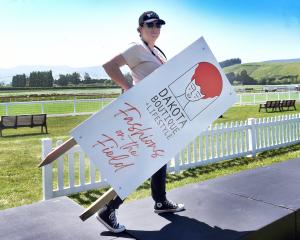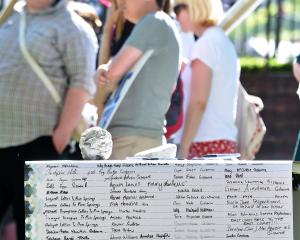
Bruce McKinlay said a recent photograph of one of the charismatic flightless birds in St Clair by Cliffs Rd resident Alistair Mackay represented the fifth "event", or sighting, of the species in the city since a weka was found in a Dunedin student flat in 2020.
This latest sighting appeared to be of a lone weka carving out an existence in the St Clair area with reports of the bird at Second Beach and in Cliffs Rd.
Mr McKinlay said since February there had also been a string of records of the native birds around Normanby, where he believed there were two or more living in the area.
The birds walked great distances and so sightings in St Leonards could be those Normanby birds.
But there had also been a bird seen twice above Port Chalmers, he said.
He started recording sightings in case the birds did gain a foothold in the area.
"If weka are going to establish in the city, then this is the beginning of that story," he said.
"So often things sort of appear and we’ve got no beginning of the story.
"I just felt that it’s of sufficient public interest.
"And if we do end up with them here, people will want to know ‘what’s the story?"’
Mr McKinlay said he believed it was possible the birds — known by some to be quirky, curious troublemakers — were hitching rides as stowaways on cars returning from the West Coast or Fiordland.
But, he said, without blaming anyone, one obstacle stopping the birds getting a foothold in the city would be off-leash dogs.
"I think the biggest risk for that bird is it appears from recent posts that it’s found the cafe and it’s where people take their dogs.
"I think that inadvertently, there’s a high risk that that weka will get munched by a dog.
"If a dog does it in front of everybody else, it’s going to be pretty traumatic."
Mr Mackay, who took the photograph of the weka near the tussock lining Second Beach Rd, said he had been aware of the bird living at Second Beach for several months.
However, the first time he saw it was three weeks ago when it appeared in his backyard.
At the time, he went inside to get his phone to take a photo and when he returned the bird was gone.
Last Saturday, he saw it for the first time in a public place and had his phone on him. He snapped a photo and posted it to social media, knowing there was a "bit of interest" in the species.
The post got nearly 400 reactions and the feedback proved the birds remained "a bit controversial", he said.
Forest & Bird projects manager Francesca Cunninghame said the birds were curious, engaging creatures.
"They are a controversial bird, but they’re a New Zealand species, and they have a place in our ecosystem.
"They are predators as well.
"But, you know, it’s us humans that have upset the balance, not them."











